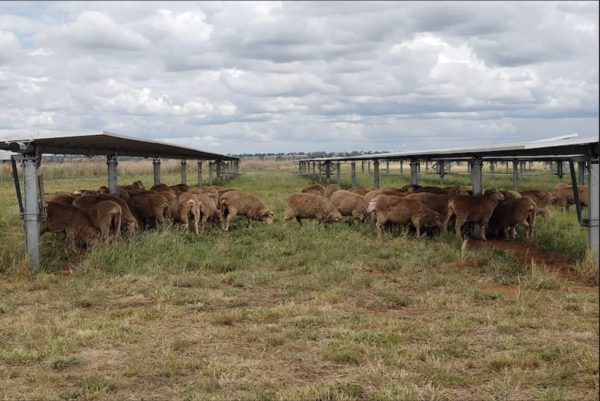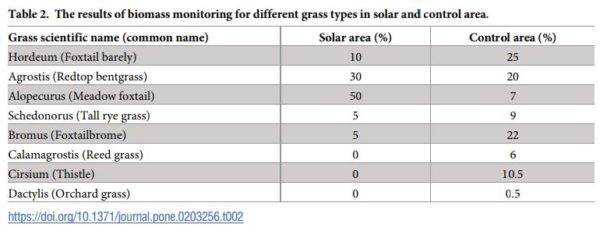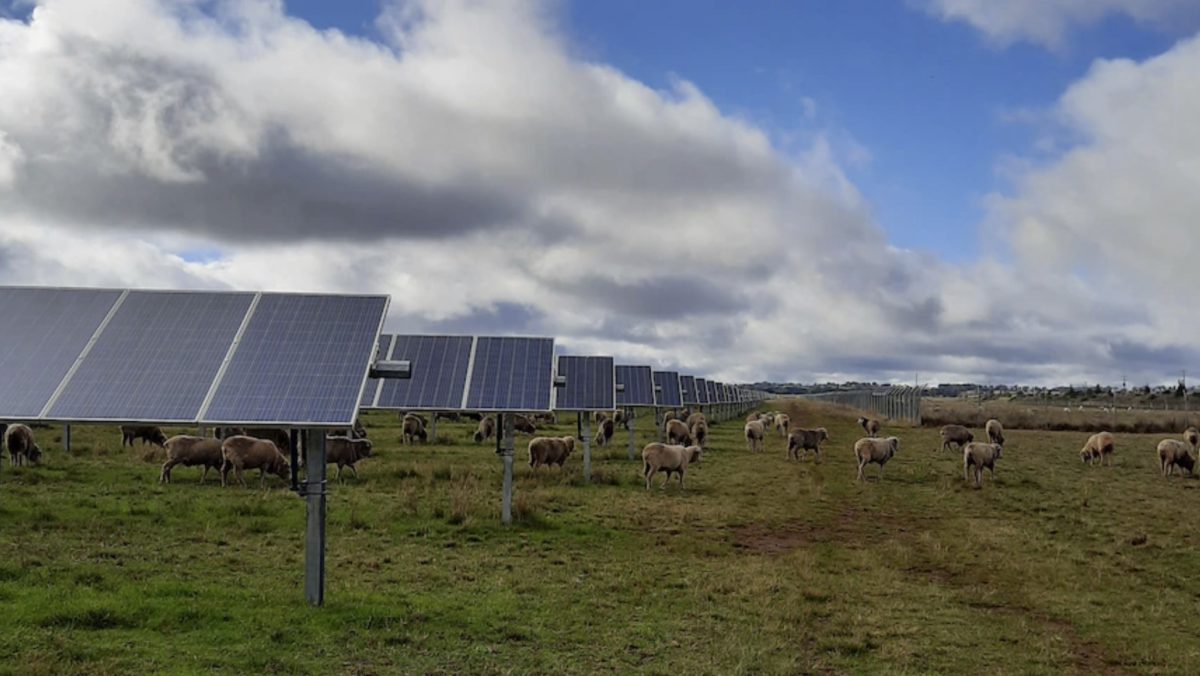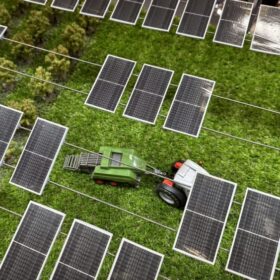Two agrivoltaic installations in New South Wales, Australia are being credited with increasing the quantity and quality of fleece in sheep grazing at the facilities during a drought. Research has indicated that the partial shade offered by solar panels creates a microclimate that reduces evaporation and significantly boosts the production of vegetation in arid climates.
While these results are preliminary and anecdotal (and perhaps a tall tale from a fleece salesman down under), they offer potentially exciting field results that could be applied globally.
Graeme Ostini, a wool broker, says he’s been grazing his merino wethers (a variety of sheep) at a solar farm where sheep can graze under the modules. Ostini and other grazers say that over the past few years, these sheep have been ‘cutting an amazing amount of wool’.
Ostini said, “It is actually quite astonishing. Some of the sheep look fantastic. They’re growing exponentially and the wool cuts are in the top 5% in the district.” Ostini has been grazing sheep at the site for four years now.
At a separate site, a Tom Warren runs about 250 merino ewes and wethers on 54 hectares of land, land that he also leases to a solar developer.

Image: Tom Warren
Warren claims that while his wool yields remained the same, the quality of his wool improved significantly due to reduced contamination. The panels did more than provide shade for the sheep and grass: by slowing evaporation, they also prevented dust from contaminating the wool.
Mr. Warren noted that the solar panels condense water that drips onto the grasses and provide an additional source of water, increasing the carrying capacity of the land by around 25%. Warren also noted that, by leasing his land to the solar farm and grazing his sheep there, his income had increased.
The higher quantities of grass available for grazing were not surprising. Dr. Elnaz Hassapour Adeh, a researcher at Oregon State’s College of Agricultural Sciences, found that several key grazing grasses were able to significantly increase their output mostly due to significantly increased water efficiency – by 328%.

In total, the researchers found that areas that were partially or fully covered by solar panels increased their biomass production by 90%.
This content is protected by copyright and may not be reused. If you want to cooperate with us and would like to reuse some of our content, please contact: editors@pv-magazine.com.








Great write-up. Reminds me of a recent story of an ocean area that had offshore wind farms added…and the fish stocks actually increased around the turbines. Another sensible way to get us off fossil fuels.
Remember: A trillion $$$ invested NOW….is better than 30+ trillion AFTER sea levels rise.
This bodes well for a lot more solar development on agricultural land where it can help, not hinder the plants.
I was just driving in an area around South Hadley, Ma. and I said to my wife it seems like grazing sheep under solar farms would be a perfect dual use of the land. Most of the solar farms I saw had chain-link fences around the perimeter and I thought what a waste.
Important that the initial installation has the panels high enough that the ground is not too shaded and sheep cannot reach anything they can damage. A neighbor has very low ground mount panels so they cannot be grazed. It is even difficult to get a weedeater under them.